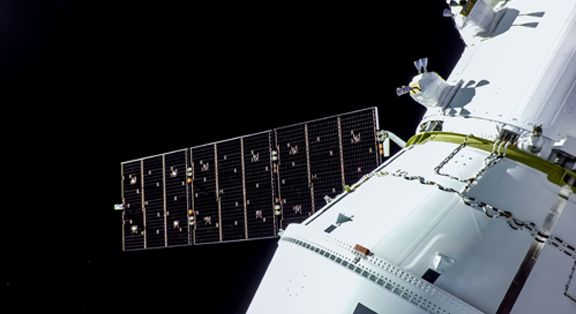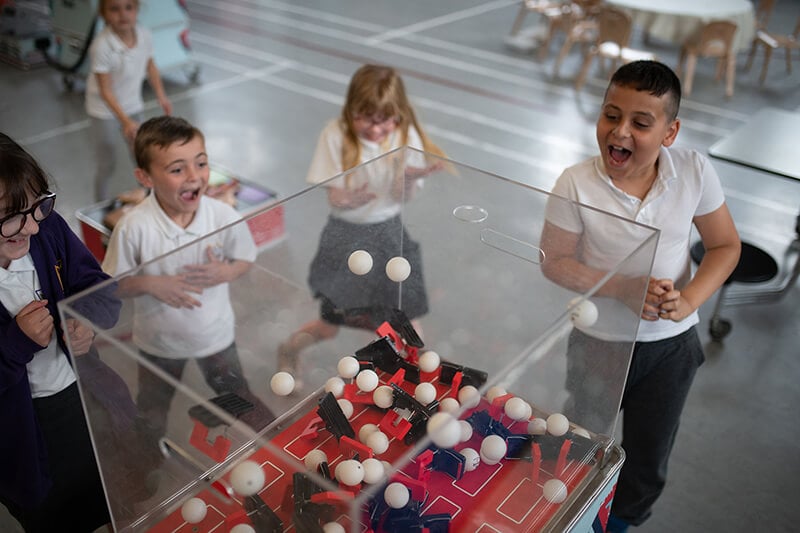Dress Rehearsal for a Lunar Landing

In May 1969, all eyes were on Apollo 10 as its three-person crew carried out almost every step in the complicated and dangerous process of landing on the Moon, all except for the final one. Of the Apollo 10 crew, only John Young and Gene Cernan would walk on the Moon in later missions, but Thomas Stafford would never get to kick up any lunar dust, despite coming within just 14 kilometres of the surface.
Apollo 10 launched just five months after Apollo 8 successfully orbited the Moon and unveiled the far side of it to human eyes for the first time. It was also the last mission before Apollo 11’s landing, and Neil Armstrong’s historic “small step” on the lunar surface.
Even though it was “only” a dress rehearsal, the mission was vital. This was the last opportunity for NASA’s scientists and engineers to fine-tune the enormous Saturn V rocket and iron out any issues with the command module and lunar lander before the planned landing in July 1969.
Thankfully, Apollo 10 showed that the spacecraft performed admirably. The crew also showed it was possible to shave in space, that even astronauts get told off when they swear into a live microphone, and if enough fibreglass insulation is floating around in zero-g, you too can look like you’ve just escaped a chicken coop.
Paving the Way for Lunar Return
Looking back on Apollo 10, it’s incredible to think that the crew were carrying out many difficult tasks in space for the first time. It’s thanks to their hard work and training, the engineering ingenuity, and NASA’s bold vision of landing a man on the Moon “before the decade is out” that there are still human footprints on the Moon’s surface. And what’s more incredible is that soon we’ll be able to watch a similar dress rehearsal all over again.
With the support of international partners, NASA’s Artemis programme aims to return humans to the Moon in the next few years. The first mission, the uncrewed Artemis I, launched in late 2022.
Following that successful mission, the crew of Artemis II was announced this April. They were named as Commander Ried Wiseman, Pilot Victor Glover, Mission Specialist Christina Koch of NASA and Mission Specialist Jeremy Hansen of the Canadian Space Agency. At time of writing in May 2023, their launch is slated for no earlier than November 2024, but no matter when they launch, they will be the first humans to go beyond low-earth orbit since 1972.
After launch, the crew will spend 10 days on board their Orion capsule as they orbit the Moon before returning home. This Orion capsule was more recently home to some “moonikins” - human analogues covered in sensors – plus the European Space Agency’s own Shaun the Sheep. All were being used to test out the capsule, and just like Apollo 10 before it, prepare for the missions that will follow. The success of Artemis III depends on lessons learned from Artemis II.
Breaking Barriers and Inspiring Generations
While testing out the technology is a huge part of the mission, on a more human note, Orion will also make history by carrying the first person of colour and the first woman to lunar orbit. Sally Ride, the first American woman in space, once said, “you can’t be what you can’t see”. To this end, the crew boasts record-breaking role models and trailblazers, and this is even before they begin their journey to the Moon.
Christina Koch, on her first mission to the International Space Station (ISS) in 2019, carried out the first ever all-woman spacewalk with her crewmate Jessica Meir. Her mission was also extended and ended with her holding the record for the longest continuous spaceflight by a woman, at a monumental 328 days. Victor Glover made his first spaceflight in 2018 and was the first African American astronaut to live and work on the ISS on a long-duration mission. Previous NASA missions to the ISS had included Black crew members, but as they were part of assembly missions in the space station’s early days, they only visited for a short time and lived on the space shuttle during their flights. Victor clocked up 167 days in space and performed an impressive four spacewalks in that time.
As the Apollo generation hands on the baton to the Artemis generation, we are excited to be able to see humanity’s return to the Moon, and to be better able to see ourselves in each of the astronauts.
Further Information
This blog post by Nina Cameron is adapted from an article by Glasgow Science Centre that first appeared in Glasgow Times in May 2023.





